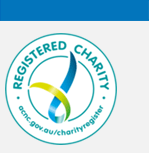Abstract
A structured approach to communication between health care professionals contains introduction/identification; situation; background; assessment and request/recommendation (ISBAR). ISBAR was introduced into the post-anaesthetic care unit (PACU) of a large Victorian health service in 2013. The aim of this study was to measure the effect of an education program on ISBAR compliance.
Method: A pre/post-test design using a 14-item audit tool was used to measure compliance to ISBAR before and after an education intervention in two acute hospitals in Melbourne, Victoria. The intervention consisted of one 30-minute education session to anaesthetists, and two 30-minute education sessions to PACU nurses, combined with visual cues using ISBAR wall posters.
Results: In Hospital A, significant improvement from pre- to post-audit was found in the items of cardiovascular assessment (χ2 (1) = 4.06, p < .05), respiratory assessment (χ2 (1) = 12.85, p < .01), analgesia assessment and actions (Fisher’s exact test p < .05) and responsibility + referral (χ2 (1) = 4.44, p < .05). For Hospital B significant improvement was found in communication difficulties (χ2 (2) = 13.55, p < .01) and significant decreased performance was found in respiratory assessment (χ2 (1) = 8.98, p < .01) and responsibility + referral (χ2 (1) = 13.26, p < .01).
Implication for practice: The results from this study cohort suggest an augmented education program may produce mixed results for ISBAR compliance. More than education and visual tools may be required to improve PACU ISBAR compliance.
Recommended Citation
Kitney, Patricia; Tam, Raymond; Bennett, Paul; Buttigieg, Dianne; Bramley, David; and Wang, Wei
(2016)
"Handover between anaesthetists and post-anaesthetic care unit nursing staff using ISBAR principles: A quality improvement study,"
Journal of Perioperative Nursing: Vol. 29
:
Iss.
1
, Article 2.
Available at: https://doi.org/10.26550/2209-1092.1001
Creative Commons License

This work is licensed under a Creative Commons Attribution 4.0 License.
Included in
Health Services Administration Commons, Health Services Research Commons, Perioperative, Operating Room and Surgical Nursing Commons, Surgery Commons


